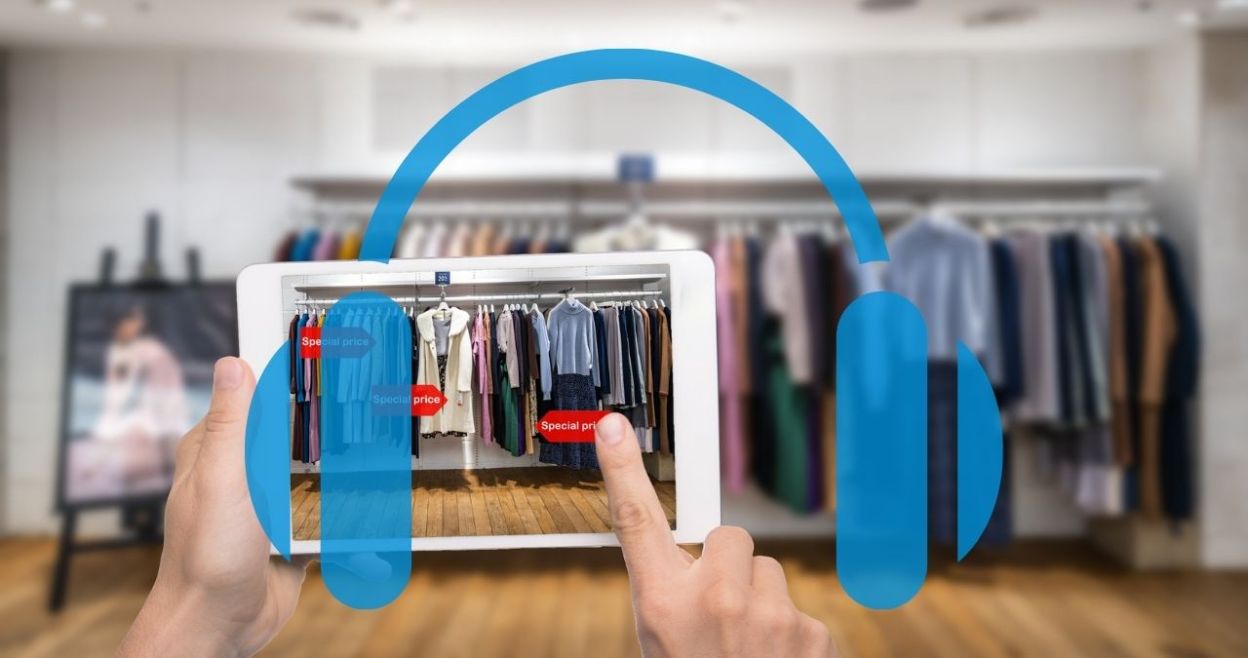What’s in This Episode:
- Shopping’s past, present and future
- “The lonely roll of toilet paper”
- It’s all about the app
- Robots?!
Listen in Your Favorite Podcast Player
Featuring (In Order of Appearance)

Shop Culture Tech
Do you remember the first thing you bought online? For many of us, it was a textbook or a resold collector’s item from an online auction site. Fast forward to today—a mere 25 year journey—and there are two whole generations who couldn’t comprehend that before they were born, you couldn’t open an app and have something delivered in two days or less. Or even more recently, pull up to the curb and get it within 2 hours of your order.
Online shopping is a way of modern life. And it’s now so common that the e-commerce market value exceeded $10 trillion in 2020, according to Grand View Research. And over half of consumers use smartphones for shopping, according to a recent Statista report.
These exceptional numbers are due in large part to the crazy world we lived in in 2020. But before we jump into the present day “shop culture tech” experience, let’s take a step back and dive into just how quickly we went from buying only books online to what retailers now call omni-channel shopping experiences.
Shopping’s Past, Present and Future
Looking back, Amazon, eBay and Yahoo! were digital retail pioneers, and “at the time, had a lot going for them,” explained Joseph Skorupa, RIS News Editor at Large. “They were making money in different ways.”
Other retailers saw competitors’ success and recognized it was a trend they couldn’t ignore. Customers demanded efficiency, but no one had the infrastructure in place—the warehouses and logistics—that Amazon did, “so retailers had to catch up and it took them quite a while…but shoppers demanded it… They really drove the process,” Skorupa said.
Because there’s a lot of efficiency in shopping from home, retailers began to imagine scenarios that could optimally blend physical and online retail for the benefit of both customers and brands. Today, that connected, seamless experience is known as the omni-channel experience. And digital technology is key to its success.
“The Lonely Roll of Toilet Paper”
Amid 2020’s shelter-in-place mandates, retailers had to pivot quickly to support social distancing and at-home shopping. They also had to scramble as customers surged into stores, cleared items off shelves (like toilet paper!) and put pressure on supply chains.
DICK’S Sporting Goods, for example, saw a significant spike in demand for sports such as golf and tennis, as well as fitness. “We had to really figure out ways to provide that product to our customers and in a safe way,” explained Jason Williams, VP of Athlete Technology at DICK’S Sporting Goods.
“We often reference our contactless curbside pickup process as one of the big wins that we had during that time. We will deliver that service within 48 hours,” Williams said.
It’s All About the App
DICK’S Sporting Goods—which, at its roots, is customer-athlete obsessed—was among those most ready for the acceleration of online buying. Its digital foundation already enabled e-commerce and omni-channel experiences. Yet, the pandemic challenged the retailer’s offerings to become even more flexible and creative.
“What we built was based on a lot of services that we already had readily available with our pick-and-pack and real-time inventory processes in the stores for teammates,” Williams said. “We could tie them together and put a product out there quickly across multiple portfolios.”
He said the company’s contactless curbside pickup service was stood up quickly, but truly years in the making. And it really resonated with customers. So has its Scorecard loyalty program.
The retailer continues to invest in data science to understand its customer, “knowing what our customers buying trends are and what they're searching for online,” said Williams. “Our data strategy is really driven around real-time personalization.”
Up Next: Automation and Robots?!
Another innovation the pandemic accelerated is robots. Leading U.S. retailers “recently began expanding robotic fleets by adding autonomous floor scrubbers to make their stores safer,” said Skorupa.
He believes autonomous processes, being handled by robots, is the next major trend. “And I see that really exploding in the next year or two. It will be mainstream, and every retailer will have robots in one form or another,” Skorupa concluded.

